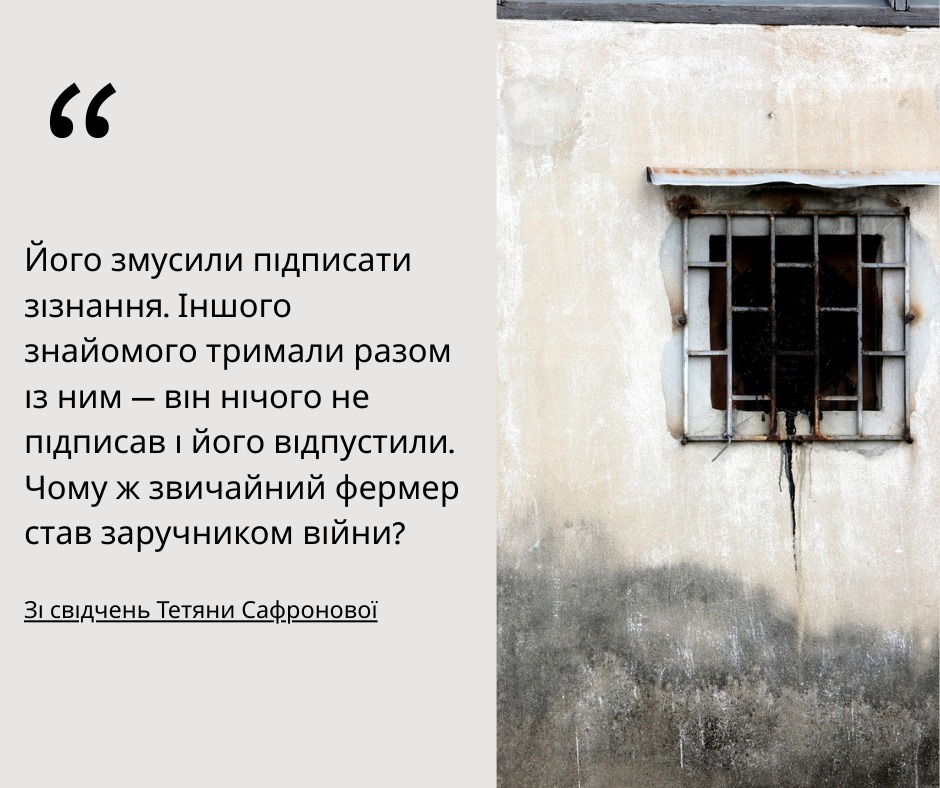

On April 16, 2024, in the village of Vysoke, Vasylivskyi district, Zaporizhia region, the occupiers kidnapped Vasyl Safronov, born in 1965. This happened at about 5 am, when armed Russian military personnel in balaclavas burst into his house, broke the window and door, pulled the man straight out of bed and took him to an unknown destination.
Vasyl is an ordinary small farmer. He had no military education, only service in the Soviet army, and had no chronic illnesses. He was a peaceful civilian who ran a farm with his family.
After the kidnapping, his relatives knew nothing about his whereabouts for eight months. Only at the end of December 2024 did it become known: first he was detained allegedly for “violating the curfew” and held for three weeks in Melitopol. Then he was transferred to Mariupol, where they began to fabricate a criminal case — he was accused of “possession of weapons.”
Since then, Vasyl's detention has been continuously extended, there is no trial on the merits. His case is not moving, and investigators and prosecutors are changing. The family is convinced that he made the signed confession under pressure.
The family appealed to all possible authorities: the police, the Red Cross, the Coordination Headquarters, the SBU, the VRU Commissioner for Human Rights, even the UN. However, the answers were formal: either "we didn't find it" or "we can't help in any way."
Vasyl's daughter managed to see her father during a visit to the pre-trial detention center. He looked exhausted, but at that time he was still holding on. The family can send him small messages once a month.
His daughter-in-law, Tetyana Safronova, says:
"He was forced to sign a confession. Why did an ordinary farmer become a hostage of war?"
Vasyl Safronov's story is another example of the illegal abductions of civilians, torture, and fabrication of cases that the occupiers use as a tool of intimidation in the occupied territories.
This documentation project is supported by the Norwegian Helsinki Committee (NHC). The views and conclusions expressed in this publication are those of the authors and do not necessarily reflect the position of the NHC.